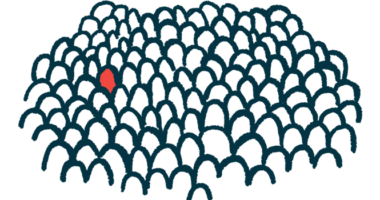Woman needed 2 tumor surgeries to resolve rare case of Cushing’s
Report highlights importance of complete hormonal workup, tumor screening

A 32-year-old woman with a rare case of two pituitary tumors required two surgeries to treat her Cushing’s disease, according to a recent report.
Her disease was caused by one tumor, or adenoma, that resulted in high amounts of the adrenocorticotropic hormone (ACTH). The other tumor, called a prolactinoma, causes the release of excessive amounts of the prolactin hormone, which is associated with certain breast tissue development and milk production.
After surgery to remove the first lesion did not improve her condition, a second surgery was necessary to successfully treat her Cushing’s disease.
“The rare presence of two pituitary adenomas can complicate the diagnosis, medical and surgical management, and long-term outcomes for patients,” researchers wrote. “A complete endocrine [hormonal] workup is essential when a pituitary adenoma is suspected and can help screen for [multi]-hormonal and multiple pituitary adenomas.”
The study, “Consecutive resections of double pituitary adenoma for resolution of Cushing disease: illustrative case,” was published in the Journal of Neurosurgery: Case Lessons.
Cushing’s disease is a specific form of Cushing’s syndrome, which is a broader term referring to any condition caused by prolonged exposure to elevated levels of the stress hormone cortisol. Cushing’s disease is caused by tumors in the pituitary gland that lead to the overproduction of ACTH.
ACTH signals the adrenal glands, sitting atop the kidneys, to produce cortisol. In Cushing’s, high cortisol levels lead to disease symptoms, such as weight gain, changes in skin and body hair, and emotional disturbances.
Usually, the first-line treatment for the disease is surgery to remove the disease-causing tumor in the pituitary gland, which can cure the disease in up to 90% of patients, particularly if the tumor is small.
Small proportion of Cushing’s patients have multiple lesions
A small proportion of Cushing’s patients — 1% to 2% of those who undergo surgery — have two different lesions, which may lead to the release of different hormones, such as ACTH and prolactin.
In this report, the researchers described the case of a woman with a history of pituitary lesions and high prolactin levels, and was admitted to their institution for Cushing’s.
A decade earlier, the woman was examined by a gynecologist for abnormal hair growth, milk production unrelated to pregnancy or lactation, and infrequent menstruation. Further testing revealed she had high prolactin levels, while the levels of other hormones produced by the pituitary gland were normal.
Magnetic resonance imaging (MRI) revealed she had a pituitary lesion. She was treated for five years with bromocriptine, a medication often used to treat conditions related to an imbalance of certain hormones in the body. The medication normalized her prolactin levels, although she continued to have irregular menstruation and abnormal hair growth. She also started on birth control medication.
Ten years later, she was evaluated for weight gain, abnormal hair growth, and potential irregular menstruation. A physical examination revealed she had facial fullness, stretch marks on both breasts, and excess weight.
MRI reveals tumor on left side of pituitary gland
Laboratory analysis revealed she had high cortisol levels, and normal prolactin levels, although close to the upper limit of normal. MRI revealed the presence of a lesion on the left side of the pituitary gland. Desmopressin stimulation led to an increase in ACTH and cortisol levels, consistent with a Cushing’s disease diagnosis.
In a desmopressin test, a synthetic form of the hormone vasopressin is administered to stimulate the release of ACTH. In individuals with Cushing’s, the tumor in the pituitary gland causes an abnormal increase in ACTH production, leading to elevated cortisol levels.
During surgery to remove the known left lesion, the surgeon detected and removed a tumor distinct from the left pituitary lesion, which had been assumed to be the cause of Cushing’s. The left lesion was not removed because of the patient’s prolactinoma diagnosis “and an assumption that the newly discovered adenoma was the cause of ACTH hypersecretion,” the researchers wrote.
However, the analysis of the removed tissue revealed the presence of a high prolactin signal and was negative for ACTH.
One day after surgery, an MRI showed the unchanged left lesion, and the patient’s high cortisol levels persisted. Despite a second surgery being immediately proposed to the patient, she chose close follow-up monitoring instead.
“Although exploration for additional pituitary adenomas is not usually recommended, it could be considered in cases of multiple pituitary adenomas and uncertainty of the culprit of Cushing’s disease,” the researchers wrote.
After three months, the woman reported insomnia, fatigue, nighttime sweating, and increased weight gain with fat accumulation in the shoulders and around the back of the neck. Further analysis revealed elevated cortisol levels, which was treated with Isturisa (osilodrostat).
2nd surgery to remove left pituitary tumor
Six months after the first surgery, the left pituitary tumor was surgically removed, and found to have positive ACTH signaling. One day after surgery, the patient’s cortisol levels decreased, and her prolactin levels remained within the normal range.
She started on hydrocortisone for insufficient cortisol production and symptoms like nausea, headache, and muscle weakness, which resolved with the treatment.
After three months, her symptoms and overall appearance improved, and she started menstruating again. However, she had adrenal insufficiency, and an MRI revealed a very small remnant of the left pituitary tumor.
Two years after the second surgery, her weight was in the normal range, her ACTH levels were normal, and hydrocortisone therapy was stopped. In the meantime, the patient became pregnant after her condition had improved.









